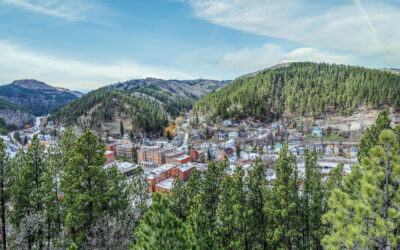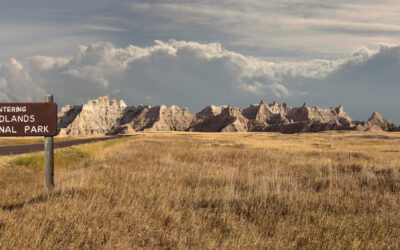South Dakota’s vast landscapes and abundant wildlife make it a prime destination for hunters in pursuit of the big game, particularly pheasants. This essential guide to hunting in South Dakota will equip you with the knowledge and tools necessary to master the art of hunting in this region. From gearing up with the proper equipment to understanding the legalities of the hunt, we will cover everything you need to know to ensure a successful and responsible hunting adventure.
Key Takeaways
- Selecting the right firearm and gear, including a multi-purpose hunting knife and a reliable backpack, is critical for a successful hunt.
- Understanding pheasant behavior and employing strategies like spot and stalk or working with hunting dogs can greatly increase the chances of a successful hunt.
- Familiarity with state-specific hunting laws, safety protocols, and respecting landowner rights is essential for a legal and ethical hunting experience.
- South Dakota is among the top destinations for pheasant hunting in the United States, offering a variety of habitats and public versus private lands to explore.
- Seasonal considerations are important when planning a hunt, as they can affect pheasant behavior, habitat conditions, and legal hunting periods.
The Hunter’s Toolbox: Gearing Up for South Dakota
Choosing the Right Firearm
When gearing up for a hunt in the diverse regions of South Dakota, selecting the right firearm is a pivotal decision that can make or break your pheasant hunting experience. A 12-gauge shotgun stands out for its versatility, handling a variety of situations with ease, while a 20-gauge offers a lighter alternative, beneficial for those long treks across the prairie.
Ammunition choice is equally important, with shot sizes 4, 5, or 6 providing an effective spread that’s ideal for the typical pheasant hunt. Remember, the right gear not only ensures safety and success but also adds comfort to your hunting adventure.
Beyond the firearm, don’t overlook the importance of a smooth shouldering technique and the use of shooting glasses for better vision and eye protection. Whether you’re navigating the Badlands or the Eastern prairies, being well-prepared with the appropriate gear is essential. Stay updated on the latest hunting tips and regional insights by subscribing to our newsletter.
Navigational Must-Haves
When venturing into the diverse terrains of South Dakota for a hunt, navigational tools are non-negotiable. A GPS unit or a traditional compass will serve as your guide through the vast prairies and rolling hills, ensuring you never lose your bearings. Alongside these, a pair of quality binoculars is indispensable for scouting terrain and tracking game from a distance.
Communication devices are equally crucial, especially in remote areas where cell service can be spotty. A two-way radio or a satellite phone can be a lifeline in emergencies, keeping you connected with your hunting party and rescue services if needed. Here’s a quick checklist of navigational essentials:
- GPS unit or compass
- High-definition binoculars
- Two-way radio/satellite phone
- Topographic maps of hunting areas
Remember, the key to a successful hunt often lies in the preparation. Equip yourself with these navigational must-haves to ensure a safe and rewarding South Dakota hunting experience.
Dressing for the Elements
When hunting in South Dakota, being well-prepared with the right clothing can make the difference between a successful outing and a miserable experience. Weather in South Dakota can be unpredictable, so it’s essential to dress in layers that can be easily added or removed as conditions change. A base layer that wicks away moisture will keep you dry, while a mid-layer provides insulation. The outer layer should be durable and waterproof to protect against rain and wind.
For your lower half, consider breathable upland hunting pants that offer freedom of movement and can withstand walking through thick brush. Pair these with a high-quality pair of boots designed for rugged terrains; they should provide ample support and be durable enough to prevent blisters. Over your boots, chaps or gaiters can offer additional protection.
Visibility is key for safety, so a blaze orange vest is non-negotiable. It should have enough pockets for your essentials and a game pouch for convenience. Don’t forget gloves to protect your hands and shooting glasses to safeguard your eyes. Lastly, a hat or cap is crucial for sun protection or warmth during colder days.
Remember, the best hunting clothing brands, like KUIU and SITKA, have been tested and reviewed to ensure they meet the needs of hunters in various environments. Investing in quality gear from reputable brands can enhance your hunting experience and ensure you’re prepared for whatever the South Dakota elements throw at you.
Mastering the Hunt: Techniques and Strategies
Understanding Pheasant Behavior
To master the hunt, a deep understanding of pheasant behavior is essential. These birds have distinct habitat preferences, often favoring areas with a mix of grain fields, grasslands, and wetlands. Their daily activities are driven by the need to feed, mate, and evade predators.
Pheasants are social birds, typically foraging in groups. This allows them to be vigilant, with some birds keeping watch while others feed. Their foraging behavior is characterized by scratching and pecking at the ground to uncover seeds, insects, and other food sources.
The habitat plays a significant role in their feeding patterns. For instance, pheasants in agricultural areas might feed on crop remnants, while those in natural settings rely on indigenous vegetation and insects. Water availability is also a key factor, as pheasants require daily access to water.
During mating season, rooster calls become a common sound as males perform elaborate displays to attract females. Understanding these calls and displays can give hunters an advantage in locating and targeting roosters.
Here’s a quick overview of pheasant activities throughout the day:
- Morning: Foraging in fields and open areas.
- Midday: Dust bathing and resting in shaded areas.
- Evening: Returning to roosting sites, often in thicker cover for protection.
Spot and Stalk: A Classic Approach
The spot and stalk method is a time-honored technique that hinges on the hunter’s ability to blend patience with precision. Identifying the right habitat is crucial, as pheasants often roost in thick grasses. Stealth is your ally here; approach potential hiding spots with minimal disturbance, keeping an eye out for any signs of pheasants. This method isn’t about speed; it’s about deliberate, careful movement.
When you’re ready to flush out the pheasants, it’s important to do so in a controlled manner. Here are some steps to follow:
- Locate the area where pheasants are likely to roost.
- Move slowly and quietly, using natural cover to your advantage.
- Observe for signs like feathers or droppings that indicate pheasant activity.
- Once a pheasant is spotted, plan your approach to flush the bird into a clear shooting lane.
Remember, the spot and stalk method requires a blend of skills: observation, stealth, and a steady hand when the moment of action arrives. It’s a rewarding approach that, when executed correctly, can yield impressive results for the persistent hunter.
Working with Hunting Dogs
In the vast and varied landscapes of South Dakota, hunting dogs are more than just companions; they are an integral part of a successful hunt. Well-trained hunting dogs excel in locating, flushing, and retrieving game, making them indispensable for pheasant hunters. The synergy between hunter and dog hinges on meticulous training and clear communication, often facilitated by an e-collar, which allows the hunter to direct the dog through dense cover.
When working with hunting dogs, it’s crucial to understand the different roles they can play. Pointers, for example, are bred to locate and indicate the presence of game, while retrievers are skilled at recovering shot birds. Here’s a quick rundown of common hunting dog breeds and their primary functions:
- Pointers: Locate game
- Flushers: Drive birds into the open
- Retrievers: Recover downed game
To optimize the use of hunting dogs, hunters must ensure their dogs are responsive to commands and able to navigate the terrain effectively. This requires consistent training sessions and a good understanding of the dog’s capabilities and limitations. Remember, the goal is to create a harmonious hunting duo where both the hunter and the dog contribute to the pursuit of the elusive ring-necked pheasant.
Navigating the Legal Landscape: Regulations and Safety
State-Specific Hunting Laws
Understanding the hunting laws of South Dakota is paramount for a successful and legal hunting trip. Season dates, bag limits, and blaze orange requirements are just the tip of the iceberg when it comes to state-specific regulations. These laws are designed not only to keep hunters and the public safe but also to ensure the conservation of wildlife populations for future generations.
In South Dakota, hunters are required to complete a hunter safety training program before they can obtain a license. This training covers critical topics such as firearm safety, ethical hunting practices, and emergency procedures. It’s a cornerstone of responsible hunting and is aimed at reducing accidents in the field.
Here’s a quick rundown of some key regulations:
- Season Dates: Specific periods when hunting certain game is legal.
- Bag Limits: Restrictions on the number of animals that can be harvested.
- Hunter Safety: Mandatory completion of a safety training course.
- Landowner Permissions: Requirement to obtain explicit permission for hunting on private lands.
Always check the latest regulations before heading out, as these can change from year to year. Remember, respecting the law is as much a part of hunting as the pursuit itself.
Safety Protocols in the Field
When venturing into South Dakota’s wilderness for a hunt, safety is paramount. Completing a hunter safety training program is often the first step, teaching essential skills such as firearm safety, ethical hunting practices, and emergency procedures. These courses are designed to reduce accidents and promote responsible behavior in the field, a cornerstone of a successful hunting experience.
Equally important is obtaining landowner permissions before hunting on private land. This process typically includes identifying the landowner, requesting access, and adhering to any conditions they set. Remember, this isn’t just about courtesy; it’s often a legal requirement.
In terms of gear, don’t overlook the importance of protective equipment. Gloves and shooting glasses are non-negotiable for personal safety, while navigation tools like a compass or GPS, and communication devices are crucial for staying oriented and connected. Here’s a quick checklist of safety essentials:
- Gloves for hand protection
- Shooting glasses for eye safety
- Compass or GPS unit for navigation
- Reliable communication device for emergencies
Lastly, always opt for safety over style and ensure you’re equipped for the rugged terrains of South Dakota. Quality boots and upland vests not only provide comfort and storage but also increase visibility and protection against the elements.
Respecting Landowner Rights
When venturing into the fields and prairies of South Dakota in pursuit of game, it’s imperative to recognize the importance of respecting landowner rights. Gaining explicit permission from landowners is not only a sign of respect but a legal necessity in many cases. This step is crucial in maintaining harmonious relationships between hunters and landowners and ensuring that your hunting activities are above board.
To navigate this aspect of hunting etiquette, here’s a simple guide:
- Identify the landowner and reach out to them well in advance of your planned hunt.
- Request access to their land for hunting purposes, being clear about your intentions and the duration of your stay.
- Adhere to any conditions or restrictions set by the landowner, which may include specific hunting areas, times, or methods.
Remember, by following these guidelines, you not only comply with legal requirements but also contribute to the conservation efforts and sustainable wildlife management that make South Dakota a prime hunting destination.
The Lay of the Land: South Dakota’s Prime Hunting Grounds
Habitat Hotspots for Pheasants
South Dakota’s landscape is a paradise for pheasants, offering a rich tapestry of habitats that cater to their survival and reproductive needs. Grassy fields are a staple in the pheasant’s habitat preferences, providing both nourishment and protection. These fields are often bordered by bushy groves and ditches, creating a complex environment where pheasants can forage, hide, and engage in dust bathing – an essential practice for maintaining feather health.
The interplay between agricultural areas and natural habitats shapes the pheasant’s feeding patterns. While crop remnants in farmlands can offer an easy meal, pheasants in wilder areas rely on a diet of natural vegetation and insects, with water sources being a pivotal factor in their daily routines. Conservation efforts in South Dakota focus on sustaining this delicate balance, promoting land management practices that preserve the grassy fields, water sources, and sheltering underbrush pheasants depend on.
Understanding these habitat hotspots is crucial for hunters aiming to track down these elusive birds. Here’s a quick rundown of the prime locations where you’re most likely to encounter pheasants in South Dakota:
- Grassy fields and pastures
- Agricultural lands with crop remnants
- Bushy groves and ditches
- Marsh areas and water sources
Each of these environments offers a unique hunting experience, echoing the diversity found across the state’s regions. From the rugged Western plains to the fertile Central valleys and the rolling Eastern hills, South Dakota provides a variety of settings for hunters to explore.
Public vs. Private Lands
When planning a hunting trip in South Dakota, understanding the differences between public and private lands is crucial for a successful outing. Public lands are open to everyone and often have designated hunting areas, which can be easily located through state resources. These areas include national grasslands, state parks, and walk-in areas that are managed for wildlife and habitat conservation. On the other hand, private lands require explicit permission from landowners before they can be accessed for hunting.
Gaining permission is not only respectful but also a legal necessity in many cases. The process typically involves identifying the landowner, formally requesting access, and adhering to any conditions they may set. Remember, maintaining good relationships with landowners can open up new opportunities for future hunts. Here’s a quick checklist for hunters seeking access to private lands:
- Identify the landowner
- Request access for hunting
- Respect landowner conditions
- Maintain good relationships
Whether you choose to explore the bushy groves and ditches of private farms or the marsh areas of public conservation lands, always prioritize safety and legal considerations. South Dakota offers a diverse range of habitats across its western, central, and eastern regions, each providing a unique hunting and prairie experience. Stay informed about the latest hunting news and updates by subscribing to relevant newsletters.
Seasonal Considerations
When planning your hunting trip to South Dakota, it’s crucial to factor in the seasonal variations that can impact your experience. The state’s hunting seasons are carefully regulated to promote wildlife conservation and ensure a sustainable hunting environment. Here’s a quick rundown of what to expect throughout the year:
- Spring: A time for renewal, but hunting opportunities are limited as many species are breeding or nesting.
- Summer: Not the prime season for hunting, but a great time to scout locations and practice your marksmanship.
- Fall: This is the peak hunting season in South Dakota, with cooler temperatures and the opening of pheasant, deer, and waterfowl seasons.
- Winter: Harsh weather conditions can make hunting challenging, but also rewarding for the persistent hunter with the right gear.
Always check the latest regulations before your hunt, as dates and bag limits can change. Remember, South Dakota offers diverse outdoor activities including hunting, fishing, biking, horseback riding, and more in different regions like Western, Central, and Eastern SD. Tailoring your hunting schedule to the season not only ensures a legal and ethical hunt but also maximizes your chances of success in the field.






